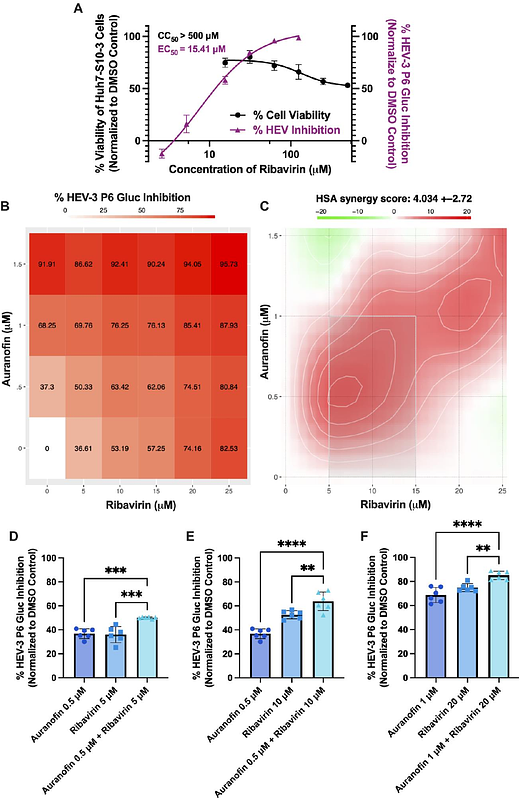Auranofin Inhibits Hepatitis E Virus Replication Via Reactive Oxygen Species

Auranofin Inhibits Hepatitis E Virus Replication Via Reactive Oxygen Species
Tiller, K.; Williams, S. T.; Wang, B.; Tian, D.; Meng, X.-J.; Weger-Lucarelli, J.
AbstractHepatitis E virus (HEV) causes roughly 20 million yearly global infections, and is associated with chronic hepatitis, neurological sequelae and pregnancy-related adverse outcomes that require antiviral therapeutic intervention. While there are currently no approved HEV-specific therapeutics, ribavirin and pegylated interferon, prescribed off-label, are the current standard of care. However, ribavirin resistance and toxicity highlight the unmet clinical need to identify safer, HEV-specific antivirals. Auranofin, an FDA-approved anti-rheumatic drug, displays antiviral activity against several viruses. Therefore, we investigated auranofin\'s potential as an antiviral and its mechanism of action against HEV. We demonstrated that auranofin displays dose-dependent antiviral activity against two genotypes of HEV that cause a significant proportion of human disease, as well as against a ribavirin treatment failure-associated mutant. Because auranofin is known to increase reactive oxygen species (ROS), we investigated the antiviral mechanism of action via treatment with ROS inhibitors. ROS inhibitors reversed auranofin-mediated ROS promotion and antiviral activity, suggesting the observed antiviral effects are mediated by ROS. Furthermore, treatment with a different ROS promotor, D-amino acid oxidase (DAAO), also displays antiviral activity against HEV, which was also reversed by treatment with a ROS inhibitor, suggesting that ROS accumulation alone is antiviral. We also demonstrated that combined treatment with auranofin and ribavirin exhibits synergistic antiviral activity in vitro, which supports repurposing auranofin as an antiviral against HEV, potentially in combination with ribavirin. Overall, this study has important implications in repurposing auranofin as an antiviral against HEV and in delineating the mechanism of action against HEV via ROS.